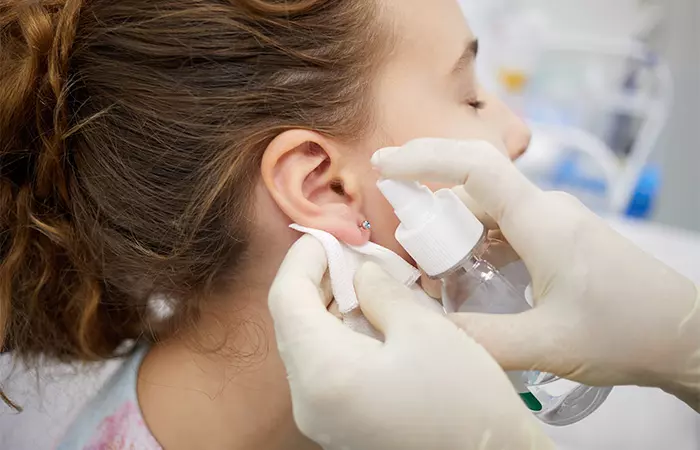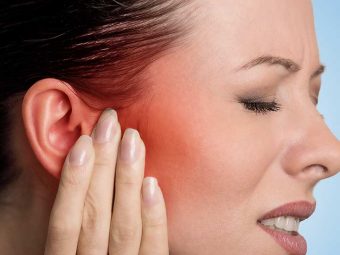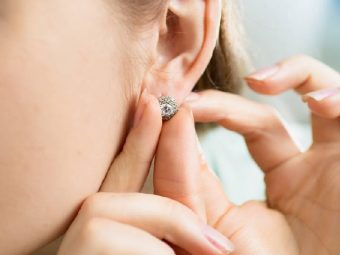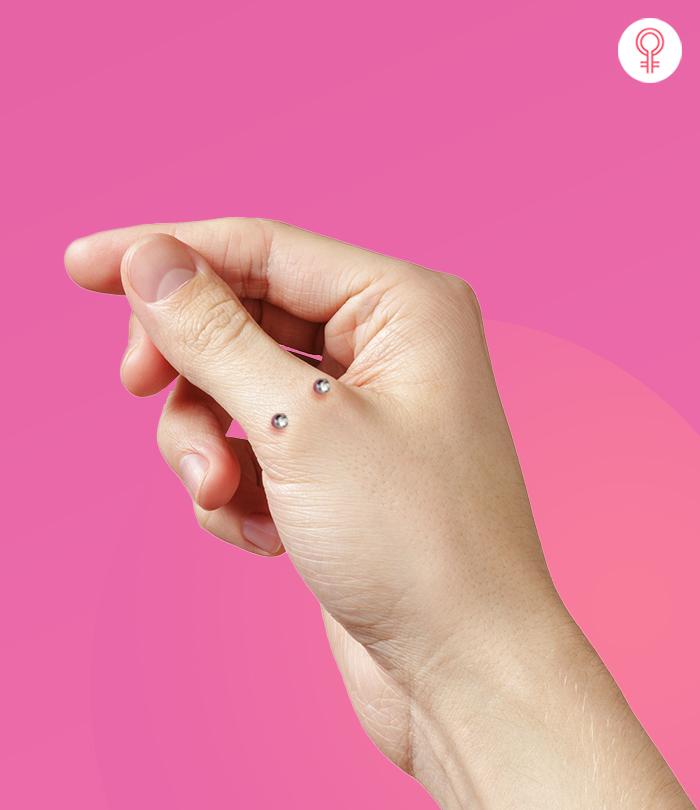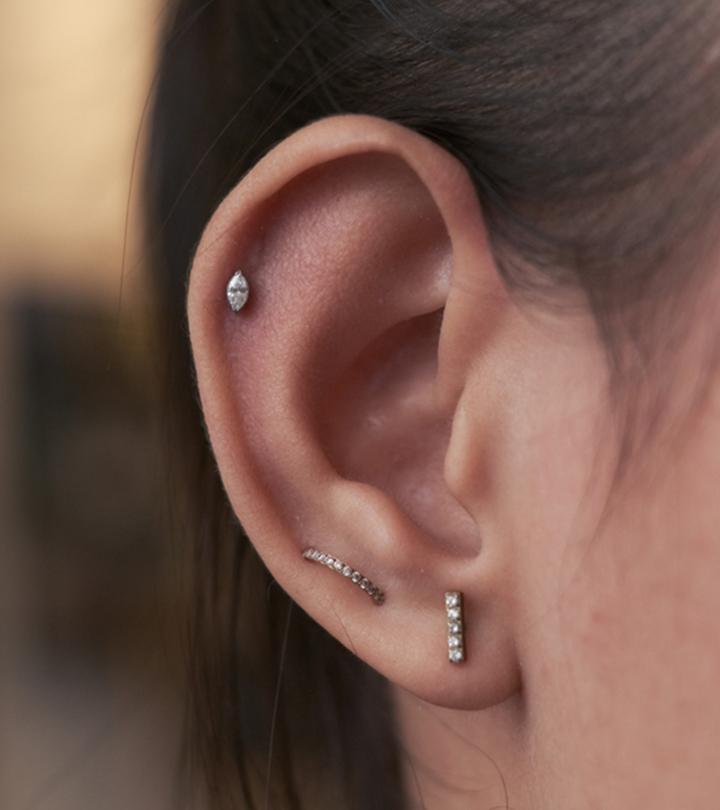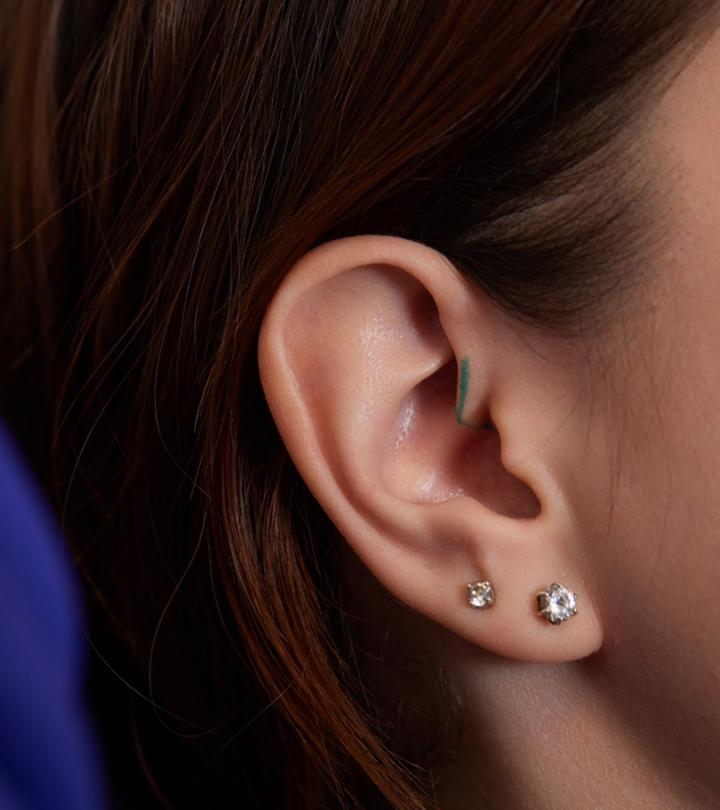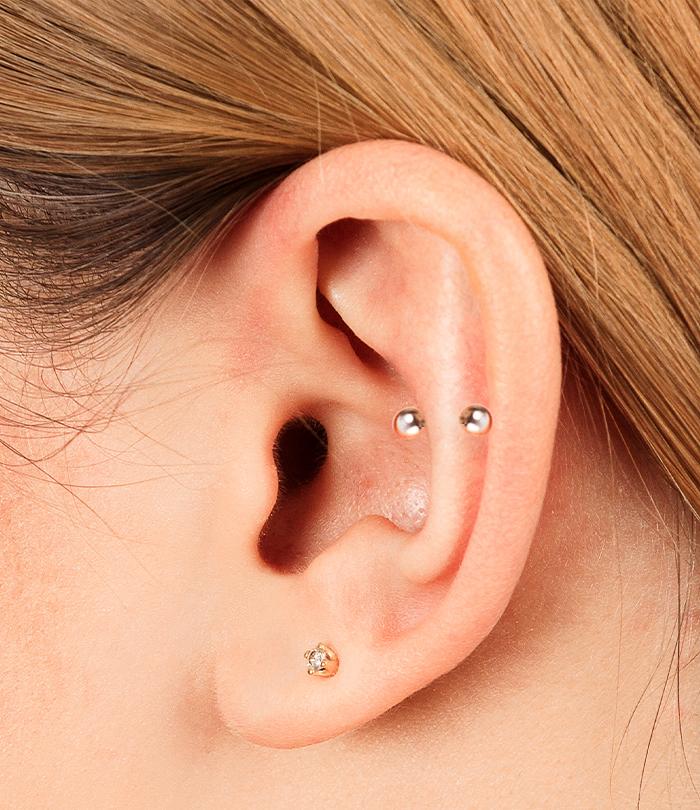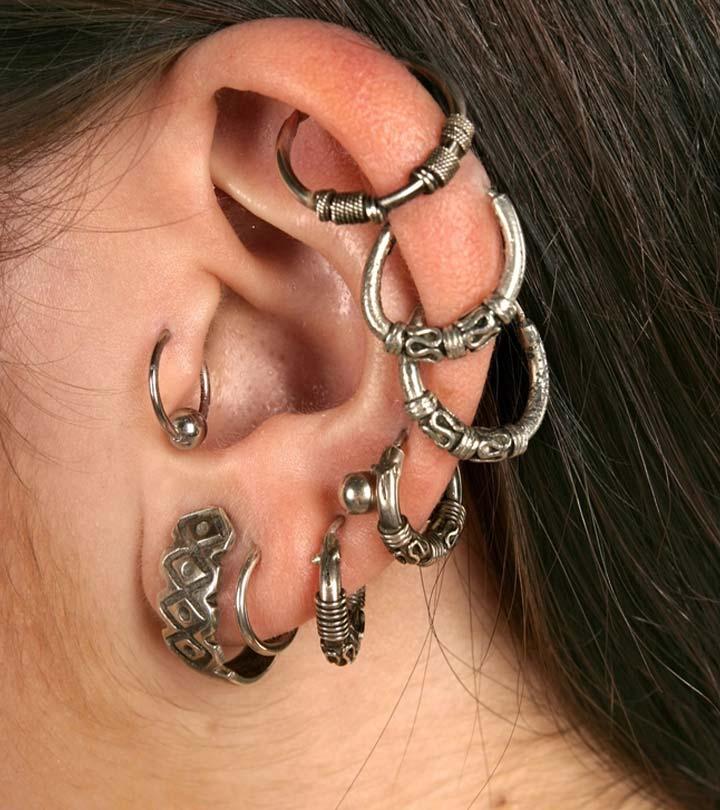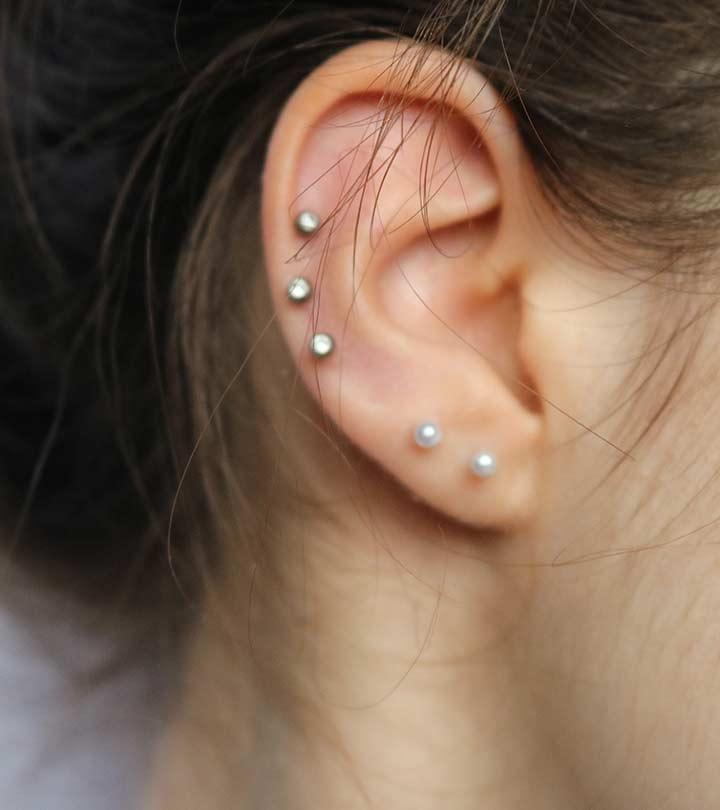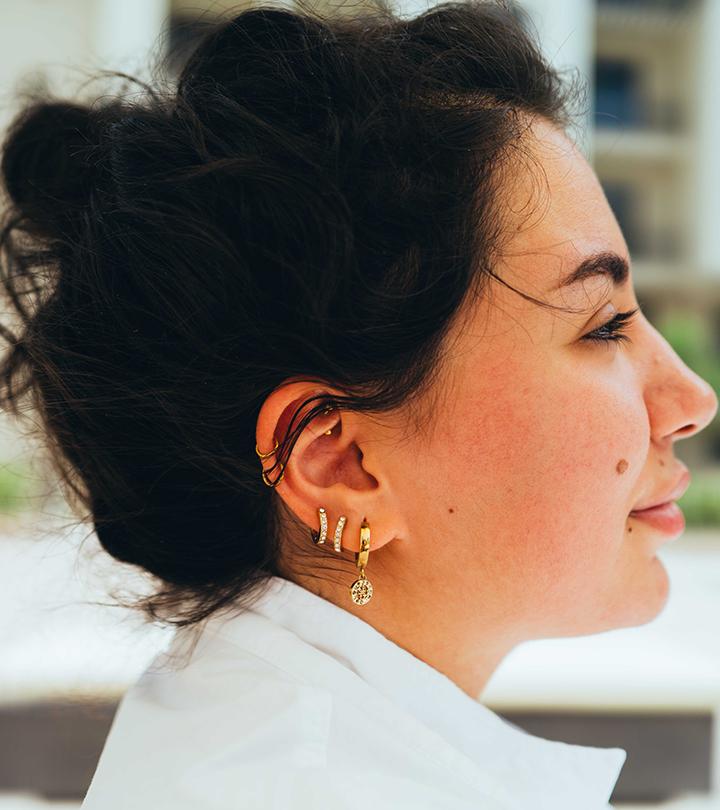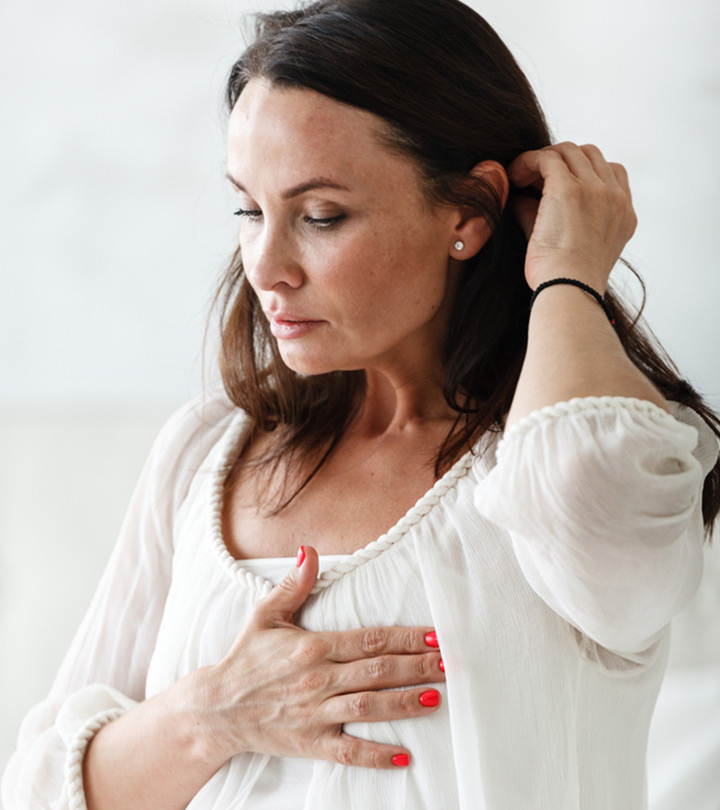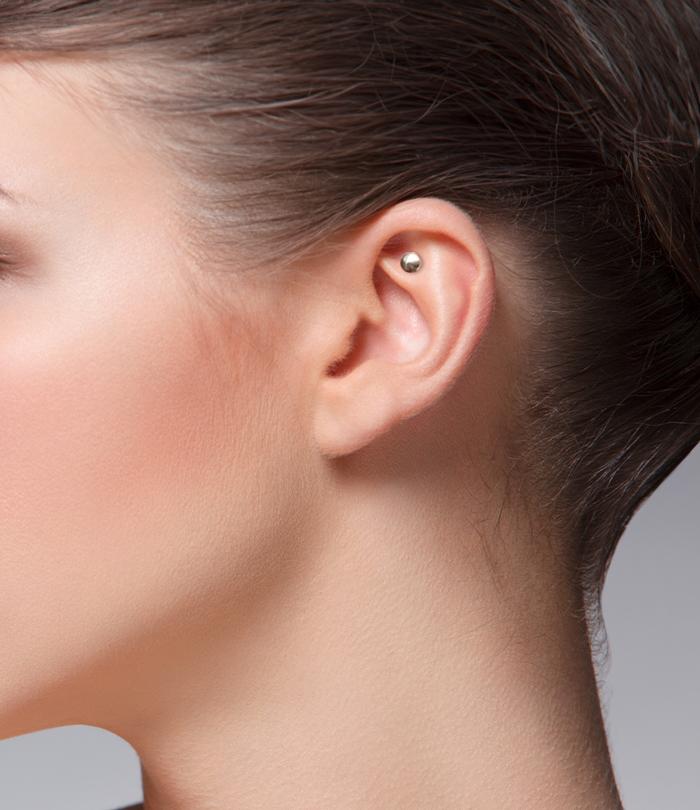What Causes Crusting Around Piercing & Tips To Clean Them
Break through the crust and unveil the truth behind piercing residues!
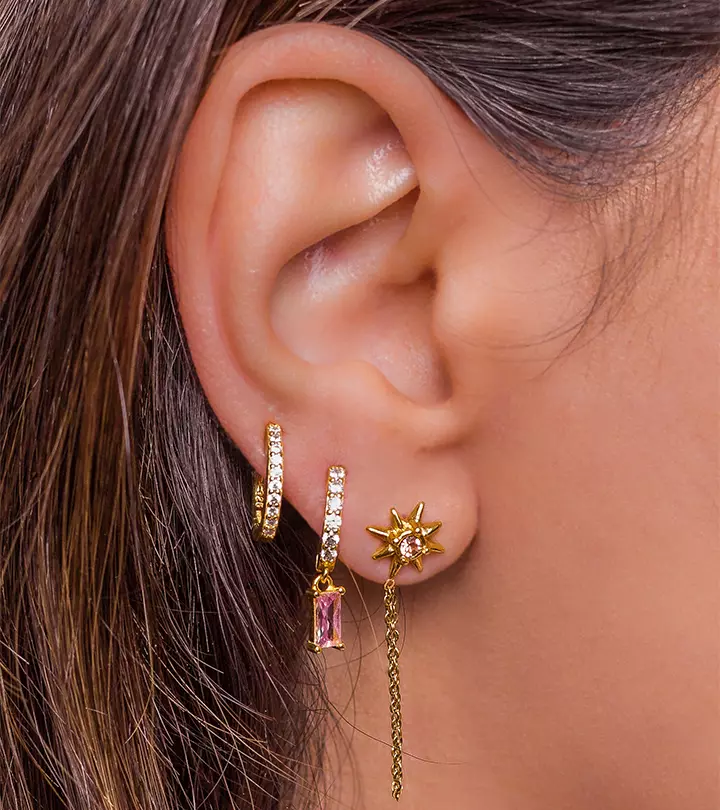
Image: Shutterstock
Navigating the delicate healing journey of a fresh piercing can often feel like walking on eggshells. This is especially true when you have to deal with piercing crusties around the site. These can sometimes form even if you meticulously adhere to the aftercare instructions. But the good news is that these really are not a cause for concern. In fact, the crusties signify a pivotal stage in the healing process.
Many aspects contribute to these crusties, right from the body’s natural healing processes to external factors like hygiene and jewelry material. In this article, we further discuss these reasons and offer practical tips to effectively clean them and even keep them from forming. Continue reading to learn more.
In This Article
What Are Piercing Crusties?
View this post on Instagram
Piercing crusties, also known as piercing debris or piercing residue, are the dried secretions that can accumulate around a fresh piercing. These crusty formations are typically composed of lymphatic fluid, a yellowish clear liquid that helps the body’s natural healing process by carrying away debris and dead cells from the piercing site (1). Additionally, crusting can sometimes also contain blood plasma, which is composed of red blood cells, white blood cells, and platelets. These elements aid in clotting and forming a protective barrier over the wound.
As the initial piercing heals, these substances can dry and solidify, forming yellow crusty patches around the jewelry. While crusties may appear alarming, especially to those unfamiliar with the piercing process, they are a normal part of the healing piercing journey and indicate that your body is actively working to repair the tissue around the piercing. Proper cleaning and care can help manage crusties and promote optimal healing, ensuring your piercing stays healthy and beautiful.
While a certain degree of crustiness is normal during the healing process, drastic changes in appearance or discomfort may indicate underlying issues, such as infection or allergic reactions.
Hence, it is important to stay vigilant and understand the factors that contribute to the development of piercing crusties, so check out the next section to know more about it.
Possible Reasons Piercings Get Crusty
View this post on Instagram
Piercings can develop a crusty layer due to various factors influencing the healing process. Here are some potential reasons behind crusty formations around piercings:
- Improper Hygiene Practices: Inadequate cleaning of the piercing site can lead to the accumulation of bacteria and debris, contributing to crusty formations (2).
- Jewelry Material: Certain metals used in jewelry, such as nickel, can trigger allergic reactions in some individuals, leading to increased crustiness and irritation around the piercing (3).
- Environmental Factors: Exposure to harsh chemicals, excessive moisture, or trauma to the piercing site can disrupt the healing process and result in crusty formations (2).
- Piercing Infections: Piercings are technically small open wounds on the skin surface which are channels for infection. Infections can result in redness, swelling, and discharge, which can dry and crust over time.
- Inadequate Jewelry Care: Failing to clean your jewelry regularly can allow dirt, sweat, and dead skin cells to accumulate, creating an environment conducive to irritation and infection.
- Existing Skin Conditions: Individuals with underlying skin conditions like eczema or psoriasis may experience increased piercing crustiness due to dryness, flakiness, and inflammation.
- Trauma: Excessive movement or manipulation of the jewelry can cause trauma to the piercing, leading to irritation, discharge and resultant crustiness.
- New Piercing: Fresh piercings are particularly susceptible to crustiness until they fully heal.
Low-quality jewelry made from inferior materials may contain irritants that contribute to piercing crustiness; opting for high-quality, hypoallergenic jewelry can help mitigate this risk (4).
Understanding these potential causes can help you effectively manage crust formations and promote healing.
Maine Lyn, a blogger, logged details and her experience of getting different kinds of piercings over time. She got a double helix piercing with a needle at the age of 21, and regarding the healing, she states, “[I] did not experience any issues besides some minor bleeding and temporary irritation bumps (which is common with helix piercings due to it being located on the outer ridge of the ear). Usual itchiness and crusties (i).”
It is important to understand the reason behind your crustiness to figure out whether you can remove it or should leave it alone. Check out the next section to know whether to adjust your piercing care routine in dealing with the crust on your piercing.
Should I Leave The Crust On My New Piercing?
Leaving the crust on a new piercing is generally not recommended. While some crustiness is a normal part of the healing process, allowing it to accumulate can hinder healing and increase the risk of complications (1). Crustiness can trap bacteria and debris, leading to infection or irritation. Therefore, it is essential to gently clean the crust away as part of your daily piercing care routine. To do so, use a cotton ball dipped in saline solution, or use a mild soap and water. This is essential as the punctured tissue requires exposure to air or proper ventilation for optimal healing. Be sure to avoid picking at it with or scratching the crust, as this can further irritate the piercing and delay healing. Consistent and gentle cleaning will help promote proper healing and keep your piercing site healthy. If you have concerns about crustiness or the healing process, consult your piercer or a healthcare professional for guidance.
Understanding the necessity of crust removal for proper healing also makes it imperative to adopt effective cleaning practices to maintain the hygiene and integrity of your piercing. So, scroll down for some easy tips!
Tips To Clean The Crust Around A Piercing
Maintaining proper hygiene around your piercing site is crucial for promoting healing and preventing infections. Here are some effective tips to safely clean the crust around your piercing:
- Cleanse Gently: Use a cotton swab or cotton ball soaked in some sterile saline solution to gently cleanse the area around your piercing. Avoid harsh cleansers or alcohol-based products, as they can irritate the skin and delay healing (5).
- Soak And Soften: If the crust has hardened around the piercing, you can soften it by soaking the area in a warm saline solution. This makes it easier to remove the crust without causing damage to the surrounding tissue.
- Avoid Over-Cleaning: While it is important to keep your piercing clean, avoid over-cleaning or excessive manipulation of the jewelry, as this can disrupt the healing process and lead to irritation.
- Pat Dry: After cleaning, gently pat dry the area around your piercing dry with a clean paper towel or gauze. Avoid using cloth towels or cotton pads as they may harbor bacteria and increase the risk of infection.
- Keep Your Hands Off: Avoid touching your piercing with dirty hands, as this can introduce bacteria and increase the risk of infection. If you need to touch your piercing, make sure to wash your hands thoroughly with a mild, fragrance-free soap and water first.
- Follow Aftercare Instructions: Always follow the piercing aftercare routine provided by your piercer, including how often to clean your piercing and what products to use. If you have any concerns or notice any signs of infection, consult your piercer or a healthcare professional for further guidance.
 Quick Tip
Quick TipBy following these tips and maintaining proper care and good hygiene practices, you can effectively clean the crust around your piercing and support the healing process. However, even with diligent care, occasional situations may arise where you experience crusting beyond the healing period. Explore the factors contributing to it in the section below.
Why Is My Ear Crusting After A Year?
Crusting around the body piercing is normal during the healing period, which lasts from two to five weeks, but experiencing crusting beyond that may indicate an underlying cause. Ear crusting over an extended period of time can stem from various factors, some of which are exacerbated by prolonged wearing of earrings. Below is a list of reasons you might encounter drawn out ear crusting:
- Accumulated Residue: Despite regular cleaning, the accumulation of skin oils, sweat, and environmental pollutants on the skin can foster bacterial growth, leading to crusting.
- Allergic Reactions: Prolonged exposure to allergenic metal materials, like nickel, can trigger persistent allergic reactions, resulting in irritation and eventual crusting (3).
- Microtrauma: Continuous pressure and movement against the skin, particularly from heavy or poorly fitting accessories, can cause microtrauma, leading to dryness, irritation, and excessive crusting.
- Infections: Untreated infections, whether bacterial or fungal, can persist or recur over time, resulting in chronic crusting that may be challenging to manage.
- Poor Hygiene: Inconsistent or inadequate cleaning practices can leave behind debris and bacteria, leading to ongoing crust buildup even after the initial healing period
- Lack Of Breaks: Continuous wearing of jewelry without breaks denies the skin the chance to recover, potentially leading to irritation and crusting.
 Quick Tip
Quick TipIf you observe persistent ear crusting spanning a year or more, particularly following prolonged earring wear, it is vital to promptly attend to the matter and consult a dermatologist. By addressing these potential factors and adopting appropriate cleaning and care techniques, you can effectively manage persistent ear crusting and ensure the continued health and comfort of your piercing.
However, crusting is often confused with scabbing, so let us understand the difference between them in the following section.
Crusting Vs. Scabbing
Distinguishing between crusting and scabbing is crucial for understanding the healing process of piercings and injuries. While they may appear similar, there are distinct differences between the two:
Crusting
- Consists of dried lymph, blood plasma, and other bodily fluids that accumulate around a piercing or wound.
- It is often lighter in color and can be easily removed with gentle cleaning.
- Crusting is a normal part of the healing process and indicates that the body is actively repairing the tissue.
Scabbing
- Forms when the body produces a protective layer of dried blood over a wound to prevent infections and promote healing.
- Scabs are usually darker in color and tend to be firmer and more adherent to the skin compared to crusties.
- While scabbing is also a natural part of the healing process, picking or removing scabs prematurely can impede healing and increase the risk of scarring and bleeding.
Understanding the differences between crusting and scabbing can help individuals properly care for their piercing wounds, promoting optimal healing. Nevertheless, sometimes when you are unsure, it is best to seek professional help to minimize further complications. Learn about situations that warrant a medical consultation in the subsequent section.
When To See A Doctor
If you experience persistent or severe piercing crusting that does not improve with proper cleaning and care, it is a good idea to consult a healthcare professional promptly. Additionally, if in the weeks post-piercing there are signs of crusting accompanied by symptoms such as excessive redness, swelling, warmth, severe pain, or discharge with an unusual odor, they may indicate an infected piercing that requires prompt medical attention. Furthermore, if you suspect an allergic reaction to the jewelry you are using, or if you have a compromised immune system, seeking medical advice is advisable to prevent potential complications. Always prioritize your health and well-being by seeking professional assistance when needed to ensure proper management and healing of your piercing.
Understanding the causes and management of piercing crusting is essential for ensuring a smooth healing process and maintaining piercing health. While crusting is a natural part of the healing journey, persistent or severe crusting may warrant medical attention to rule out infections or allergic reactions. By adopting proper cleaning techniques, addressing underlying issues, and seeking professional guidance when necessary, individuals can navigate the challenges of piercing crusting effectively. Remember, prioritizing hygiene, patience, and proactive care are key to enjoying your piercing journey while minimizing discomfort and complications.
Key Takeaways
- Piercing crusties are composed of dried fluids like lymph and blood plasma, and are a normal part of the healing process, signaling active tissue repair.
- Causes of piercing crusties include allergies to jewelry materials, infections, improper hygiene, and existing skin conditions, necessitating proper cleaning and care.
- Effective cleaning involves using gentle saline solutions or mild soap, avoiding harsh chemicals, and ensuring regular maintenance to prevent crust buildup.
- Crusting and scabbing differ, wherein the former is a light coating and the latter is an accumulation of dried dead blood cells.
Frequently Asked Questions
Is crust formation normal for all types of piercings?
Yes, crust formation is a common occurrence during the healing process for most types of piercings, as it indicates the body’s natural response to the piercing trauma for subsequent tissue repair.
Is it normal for the crust to have a certain color or smell?
While the crusting around piercings typically ranges from clear to slightly yellowish, any unusual colors like green or foul odors may indicate infection and warrant immediate medical attention.
Can I remove the crust manually, or should I let it fall off naturally?
It is generally safe to gently remove crust around piercings during cleaning, but avoid forceful or excessive manipulation to prevent irritation or injury to the healing tissue.
Does crustiness decrease as the piercing heals, and what signs indicate the piercing is fully healed?
Yes, crustiness typically decreases as the piercing heals; you will observe less discharge and crust formation over time. Signs of a fully healed piercing include the absence of pain, redness, swelling, or discharge, and the ability to change the initial jewelry without discomfort.
When will my piercing stop crusting?
Your piercing should stop crusting after the initial healing period of two to five weeks. However, if it persists beyond the healing duration of the piercing, you should check in with your professional piercer or healthcare advisor promptly.
Unravel the mystery behind piercing crusties in this insightful video. Explore common causes, prevention strategies and effective cleaning techniques, and practical tips to keep your piercings healthy and free of crusties. Click play to keep your piercings feeling fresh!
Personal Experience: Source
StyleCraze's articles are interwoven with authentic personal narratives that provide depth and resonance to our content. Below are the sources of the personal accounts referenced in this article.
(i) My Ear Piercings Experience
https://mainelynreviews.blogspot.com/2018/01/my-ear-piercing-experiences.html
References
Articles on StyleCraze are backed by verified information from peer-reviewed and academic research papers, reputed organizations, research institutions, and medical associations to ensure accuracy and relevance. Read our editorial policy to learn more.
- Chronic lower limb wounds evoke systemic response of the lymphatic (immune) system
https://www.ncbi.nlm.nih.gov/pmc/articles/PMC3495375/ - Body piercing infections
https://www.ncbi.nlm.nih.gov/books/NBK537336/ - Metal allergy and systemic contact dermatitis: An overview
https://www.ncbi.nlm.nih.gov/pmc/articles/PMC3369403/ - Jewelry for initial piercings
https://safepiercing.org/jewelry-for-initial-piercings/ - Suggested aftercare for body piercings
https://safepiercing.org/aftercare/




